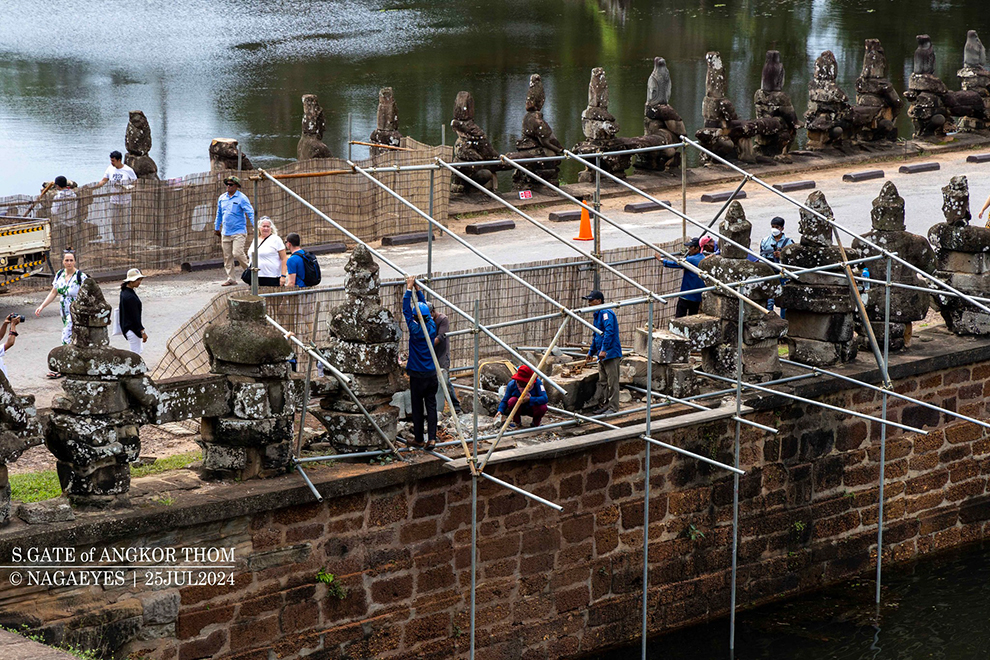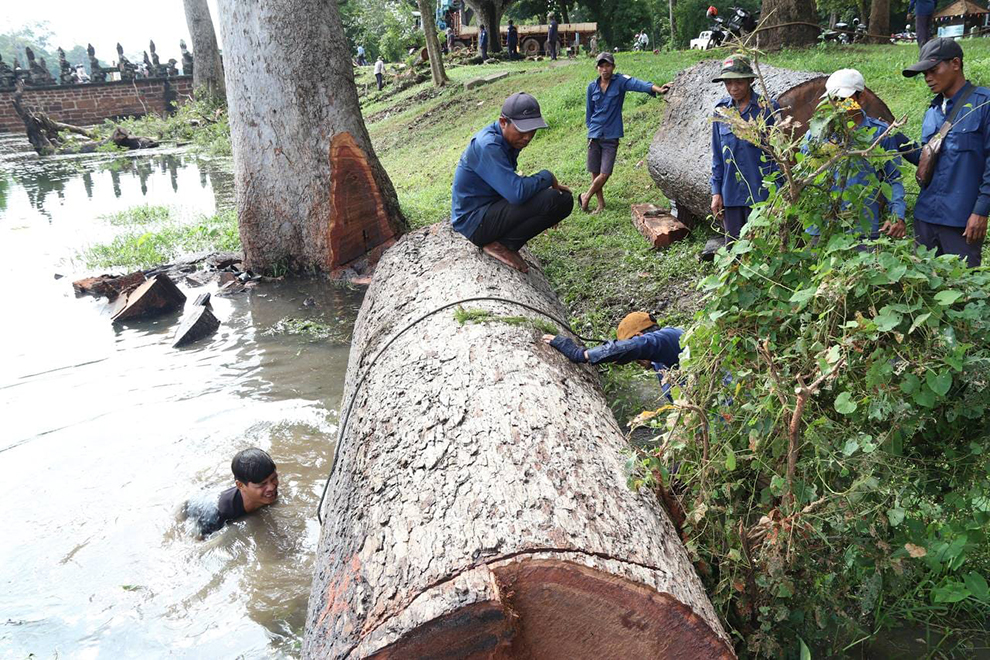August 12, 2024
PHNOM PENH – Restoration efforts are currently underway at the South Gate of Angkor Thom after a recent storm caused significant damage to several ancient sculptures.
Kim Sothin, deputy director-general of the APSARA National Authority (ANA), reported that a massive tree fell during the storm, damaging five Asura and three deity sculptures.
“An Asura’s head was thrown about 10 metres away, and several fragments fell into the water,” he stated.
He said efforts to retrieve the submerged pieces have been successful, however, the restoration process is ongoing.
“There are still a few sculptures that have not been reassembled because there has been a lot of rain these days, making it difficult to reattach the [pieces],” he told The Post.
Andy Brouwer, a Cheltenham-born researcher with a deep interest in Cambodian culture, particularly its temples and history, shared updates on social media.
He said that ANA workers have managed to rescue the Asura stone head from the baray (moat) and are working swiftly to repair the other damaged heads.

The restoration of Asuras and deities in progress. PHOTO: SUPPLIED/THE PHNOM PENH POST
“Our thoughts are with all those affected by this accident, and it shows the fragility of the Angkor temples to natural [forces],” said Brouwer, who also actively raises awareness about the illegal trafficking of Cambodian artefacts by figures like Douglas Latchford.
In response to the incident, the ANA has taken proactive measures to prevent future occurrences.
On July 27, the authority pruned and removed hazardous trees at Angkor Archaeological Park.
“The Department of Water, Forestry and Infrastructure Management team inspected and implemented emergency measures on some hazardous trees at Angkor to ensure the safety of tourists and prevent potential dangers,” a post on ANA’s social media page stated.
The ANA, the government agency that oversees the park, posted photos on social media late Tuesday [July 23] showing the fallen tree in front of the South Gate entrance.

The APSARA National Authority removes a tree that posed a safety risk at Angkor Archeological Park. PHOTO: ANA/THE PHNOM PENH POST
According to CNN, the agency later announced that the tree had been removed and the entrance was again accessible to visitors.
The Angkor site spans approximately 401.45 square kilometres and contains the ruins of capitals from various Cambodian empires dating from the 9th to the 15th centuries. It is considered one of the most significant archaeological sites in Southeast Asia.
In July 2022, the ANA announced plans to remove or prune more than 100 high-risk trees at seven temples and key areas within the park to ensure the safety of the public.
The Department of Forest Management, Landscape, Culture and Environment now plans to clear 23 trees and prune the branches of an additional 128.

The APSARA National Authority removes a tree that posed a safety risk at Angkor Archeological Park. PHOTO: ANA/THE PHNOM PENH POST
Specific actions include the felling of four trees and the trimming of 53 at the Angkor Wat complex, as well as the removal of 13 trees at Bayon Temple. Similar efforts are underway at other locations within the park.
These measures were prompted by past incidents, such as a large tree branch falling on a tourist bus at Pre Rup Temple in June 2022, which, fortunately, did not result in any injuries.


